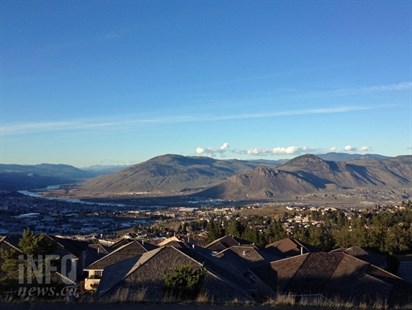
(JENNIFER STAHN / iNFOnews.ca)
March 26, 2015 - 9:35 AM
KAMLOOPS - With less than a week left in March spring is well under way at lower elevations, but that doesn’t mean winter conditions are not present on mountain highways or in the backcountry.
Avalanche Canada is warning of moderate to high risks of avalanche in many of the alpine and treeline elevations throughout the Interior. This increased risk comes on the heels of a mix of rain in snow in the region and more in the forecast.
In Kamloops temperatures will hit between 19 Celsius and will remain several degrees above the seasonal normal of 13 C over the weekend. The area received rain over the past few days but will see mostly cloudy conditions over the next two days with a mix of sun and cloud over the weekend.
Rain has hit Interior highways in the last 24 hours, and in some places that resulted in several centimetres of snow on the mountain highways, such as the route through the Pennask Summitt. Thursday morning, March 26, is expected to bring more rain and as much as 5 cm of snow on Highway 1 from Eagle Pass to Rogers Pass.
For those looking to head into the backcountry be aware the North Columbia and Glacier National Park ranges currently have a high risk of avalanche in the alpine while most other elevations in the area ranges are moderate to considerable. A special public avalanche warning has been issued for the Sea to Sky and the northern ranges, including the North Columbia and Cariboos.
“Avalanches are being triggered both in the newer, surface snow and in deeper layers that formed earlier in the winter,” Karl Klassen of Avalanche Canada said in a media release. “This challenging scenario is resulting in numerous close calls and led to two fatalities this past weekend.”
The advice is to stay on simple, low-angle terrain and avoid large, steep slopes. Watch for overhead hazard and avoid travelling where other users are on slopes above. If you do not have the training or experience to assess avalanche terrain and local conditions, Avalanche Canada recommends only going where avalanche risk is professionally managed.
All backcountry users must be equipped with essential avalanche safety equipment, according to the release. Everyone in the party needs an avalanche transceiver, a probe and a shovel every day. It’s equally important that everyone has avalanche training and has practiced using this equipment. If an avalanche occurs, the rescue is up to you. There is no time to go for help.
To contact a reporter for this story, email Jennifer Stahn at jstahn@infonews.ca or call 250-819-3723. To contact an editor, email mjones@infonews.ca or call 250-718-2724.
News from © iNFOnews, 2015